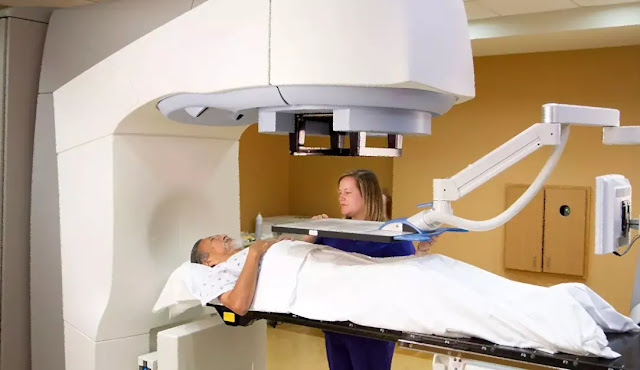Are you seeking the best treatment for prostate cancer in early stages? Discovering the optimal approach to tackle prostate cancer in its initial phases is a critical step toward successful outcomes. With advancements in medical science, there are now several effective treatment options available. However, finding the right one can be overwhelming. That's why we're here to guide you.
Prostate cancer is a significant health concern affecting men worldwide. It is crucial to detect and treat the disease in its early stages to achieve better outcomes. This article aims to explore the best treatment options available for prostate cancer in the early stages, providing valuable insights to empower patients and guide informed decision-making.
Active Surveillance: A Preferred Approach
For individuals diagnosed with early-stage prostate cancer, the best treatment often involves a strategy known as active surveillance. This approach entails vigilant monitoring of cancer's progression without immediate intervention. The rationale behind active surveillance lies in the fact that many prostate cancers grow slowly and may not pose significant harm or symptoms over a patient's lifetime. By opting for active surveillance, patients can avoid potential side effects and complications associated with more aggressive treatment methods. Also, read about metastatic prostate cancer survival rate.
To determine the appropriateness of active surveillance, several factors are taken into account, including the cancer's stage, Gleason score, PSA levels, as well as the patient's age, and overall health. If there are indications of cancer progression, treatment options can be reevaluated to ensure the best possible outcome.
Radiation Therapy: an Effective Treatment Option
Radiation therapy stands as one of the best treatments for prostate cancer in early stages. This powerful approach utilizes high-energy radiation to target and eliminate cancer cells. There are two primary types of radiation therapy commonly employed: external beam radiation therapy (EBRT) and brachytherapy.
During EBRT, precise radiation beams are directed from outside the body to the prostate gland. The goal is to administer an accurate radiation dose to cancerous cells while minimizing harm to surrounding healthy tissues. Typically, EBRT involves multiple sessions over several weeks.
Alternatively, brachytherapy involves the insertion of tiny radioactive seeds directly into the prostate gland. These seeds emit radiation, gradually eradicating cancer cells. Brachytherapy can be performed as a one-time implantation or as a temporary procedure with seed removal after a specific duration.
Radiation therapy has demonstrated outstanding efficacy in treating early-stage prostate cancer, achieving high cure rates while preserving patients' quality of life. Each treatment plan is carefully tailored to individual factors such as tumor size, location, and overall health.
Although radiation therapy is generally well-tolerated, there may be potential side effects, including fatigue, urinary symptoms, bowel changes, and erectile dysfunction. However, advancements in radiation technology, such as intensity-modulated radiation therapy (IMRT) and image-guided radiation therapy (IGRT), have significantly reduced these effects, enhancing patient comfort and outcomes.
Radical Prostatectomy: Surgical Intervention
When it comes to early-stage prostate cancer, one of the best treatment options available is radical prostatectomy. This surgical procedure aims to remove the entire prostate gland along with the surrounding tissues. Surgeons utilize various techniques, including open surgery or minimally invasive approaches like laparoscopic or robotic-assisted surgery, to carry out the removal of the prostate gland.
Radical prostatectomy holds the promise of complete cancer removal, particularly when the disease is confined to the prostate. By eliminating the cancerous cells, this surgical intervention significantly reduces the risk of cancer recurrence. The choice of the surgical approach depends on several factors, including the surgeon's expertise, patient preference, and the specific characteristics of the case.
While radical prostatectomy can yield highly effective results, it's important to consider the potential risks and side effects associated with the procedure. These may include urinary incontinence, erectile dysfunction, and changes in orgasmic sensation. However, thanks to advancements in surgical techniques and post-operative care, these side effects have been minimized, and many patients can regain urinary control and sexual function over time.
Hormone Therapy: Enhancing Treatment Outcomes
Hormone therapy, scientifically referred to as androgen deprivation therapy (ADT), is a valuable component in the best treatment for prostate cancer in early stages. Often utilized alongside radiation therapy or as a standalone treatment, hormone therapy functions by reducing the levels of male hormones, known as androgens, in the body. This reduction in androgen levels effectively slows down the growth of cancer cells.
The integration of hormone therapy with radiation or surgery can significantly enhance treatment outcomes. By shrinking the tumor, hormone therapy facilitates more effective radiation treatment and enables less invasive surgical procedures. Additionally, hormone therapy serves as an alternative treatment option for patients who are not suitable candidates for surgery or radiation.
Although hormone therapy can be effective, it is important to consider potential side effects. Commonly observed side effects include hot flashes, a decrease in libido, an increased risk of osteoporosis, and potential cardiovascular risks. The duration of hormone therapy varies based on the individual's specific case and treatment plan.
Emerging Treatment Approaches
In the ever-evolving landscape of medical research, advancements in the best treatment for prostate cancer in early stages are opening up new possibilities. Among the promising frontiers currently under exploration through clinical trials and studies are immunotherapy and targeted drug therapy.
Immunotherapy, a cutting-edge approach, seeks to activate and bolster the patient's own immune system to recognize and eliminate cancer cells more effectively. By harnessing the body's natural defenses, this treatment avenue holds tremendous promise for improving treatment outcomes and lowering the risk of cancer recurrence in early-stage prostate cancer.
On the other hand, targeted drug therapy takes a precision-oriented approach by utilizing medications that specifically target the molecular pathways responsible for cancer cell growth and survival. These tailored therapies inhibit cancer progression by honing in on these specific factors, potentially enhancing the overall effectiveness of treatment.
Even chemotherapy, long associated with advanced-stage prostate cancer, is undergoing a renaissance in the realm of early-stage treatment. Ongoing clinical trials aim to assess its efficacy and safety in this specific context, pushing the boundaries of our understanding and expanding the arsenal of available treatment options for early-stage prostate cancer patients.
As medical research continues to progress, these novel approaches hold great promise in transforming the landscape of early-stage prostate cancer treatment, offering hope and improved outcomes for patients around the world.
Personalized Treatment Plans: Considering Individual Factors
The selection of the best treatment for early-stage prostate cancer goes beyond the cancer's characteristics. Factors such as patient age, overall health, and individual preferences play a significant role in the decision-making process.
It is crucial for patients to engage in open discussions with healthcare professionals, including urologists, radiation oncologists, and medical oncologists. These experts can provide comprehensive information, assess the patient's unique circumstances, and guide them toward the most suitable treatment options.
Shared decision-making ensures that the chosen treatment aligns with the patient's goals and maximizes their quality of life. Together with the healthcare team, patients can evaluate the potential benefits, risks, and side effects of each treatment option and make an informed decision.
Early-stage prostate cancer offers a range of treatment options, each with its benefits and considerations. Active surveillance, radiation therapy, radical prostatectomy, and hormone therapy are among the primary approaches. With continual advancements in research and emerging treatments, the landscape of prostate cancer treatment continues to evolve.
By engaging in open discussions with healthcare professionals and considering individual preferences, patients can make informed decisions about their best treatment options, ensuring the best possible outcomes for their prostate cancer journey. Each treatment modality has its own unique characteristics and potential side effects, emphasizing the importance of personalized treatment plans tailored to individual needs. With ongoing advancements and emerging therapies, the future holds even more promise for improved treatment options and better long-term outcomes in the fight against early-stage prostate cancer.


